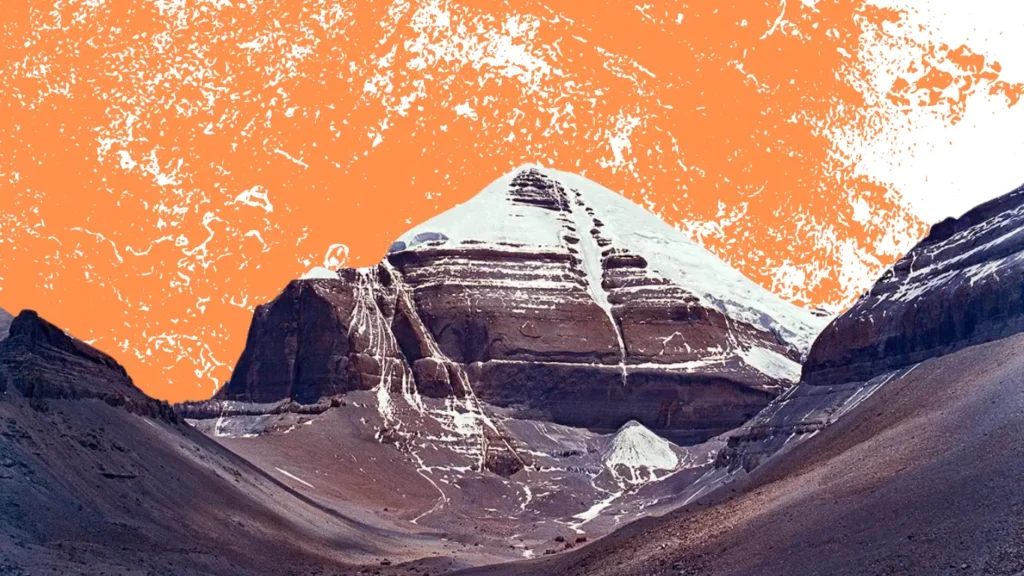
Mount Kailash, standing at 6,638 meters in the far western region of Tibet, remains one of the few peaks on Earth that has never been conquered. People always rattled with the question that why is Mount Kailash unclimbable? While Everest has been summited over 11,000 times, not a single climber has set foot on Kailash’s peak. The answer to why Mount Kailash is unclimbable lies in a unique combination of spiritual beliefs, geopolitical policy, scientific oddities, and physical dangers.
As National Geographic explains, Mount Kailash is more than just a peak—it’s a divine entity revered across four major religions.
Why is Mount Kailash Unclimbable
Mount Kailash is unclimbable not because it is the most technically difficult, but because of a sacred decree observed globally. For followers of Hinduism, Buddhism, Jainism, and Bon, the mountain is a divine residence, not a destination for sport or conquest. Even elite mountaineers, such as Reinhold Messner, have declined the challenge, calling it spiritually inappropriate.
Spiritual Significance in Hinduism
Mount Kailash is the abode of Lord Shiva, as described in ancient scriptures like the Shiva Purana. For Hindus, climbing this mountain would mean desecrating the dwelling of their supreme deity. Britannica confirms the mountain’s importance as a sacred site in Hindu mythology.
Mount Kailash in Tibetan Buddhism
Buddhists consider Mount Kailash the earthly reflection of Mount Meru, the axis mundi of the cosmos. As noted by DalaiLama.com, walking around the mountain brings spiritual benefits, such as karmic cleansing and enlightenment.
Why Climbing Mount Kailash is Considered Blasphemous
Climbing Mount Kailash is considered deeply disrespectful. As BBC Travel outlines, any attempt to summit the mountain is seen as a violation of divine order.
Stories of Divine Punishment
Several legends warn that those who dare attempt to climb the mountain face curses, mental instability, or unexplained illnesses. Such narratives, passed down through generations, add a chilling layer to the climb.
The Milarepa Legend: The Only “Climb” Ever Made
Milarepa, a revered Tibetan yogi, is said to have reached the summit spiritually, then forbade others from attempting it physically. His decree still influences beliefs today.
China’s Official Ban on Mount Kailash Ascents
In response to global religious sentiment, China has officially prohibited all climbing expeditions to Mount Kailash. This was notably tested in 2001 when a Spanish team was denied access after public outcry (Lonely Planet).
Harsh Weather Conditions Around Kailash
As Live Science points out, the region is prone to snowstorms, extreme cold, and thin air, making it unsafe for climbing attempts.
No Established Climbing Routes
Kailash has no fixed ropes, base camps, or mapped trails, making it unlike Everest or K2. According to the Himalayan Database, no expeditions have ever reached even the lower summit zones.
Reinhold Messner’s Ethical Refusal
The legendary alpinist, Reinhold Messner, refused the opportunity to climb Mount Kailash, stating that some places are meant to remain sacred (The Guardian).
Compass Malfunctions Near Kailash
Reports of compass malfunctions and other navigational issues abound. Though unproven, these anomalies intrigue scientists and spiritualists alike (Scientific American).
The Kora: Pilgrimage of Reverence
Rather than climb, pilgrims perform the Kora, a 52-kilometer circumambulation around the mountain. As World Atlas notes, this act is believed to purify one’s karma and elevate spiritual standing.
FAQs About Mount Kailash
What is the height of Mount Kailash?
Mount Kailash stands at an elevation of 6,638 meters (21,778 feet) above sea level.
Has anyone climbed Mount Kailash?
No, Mount Kailash has never been climbed due to spiritual beliefs and a government-enforced ban.
What is inside Mount Kailash?
There is no verified data about what lies inside. Many believe it holds spiritual or metaphysical secrets, but no scientific exploration has occurred.
Where is Mount Kailash located?
Mount Kailash is in Ngari Prefecture, Tibet, China, near the sacred Lake Manasarovar. You can view it on Google Maps here.
Why is climbing Mount Kailash forbidden?
Climbing is forbidden because it would desecrate a site considered divine by billions around the world.
Can tourists visit Mount Kailash?
Yes, tourists and pilgrims may visit and perform the Kora, but summiting is prohibited.
Conclusion
Mount Kailash is one of the few places on Earth that has remained untouched—not because it’s unreachable, but because it is spiritually and ethically protected. Its status as a holy peak, combined with governmental bans and physical challenges, keeps it mystically untouchable—a mountain meant not to be conquered, but to be revered.


Pingback: History of Remote Sensing: 17 Key Milestones